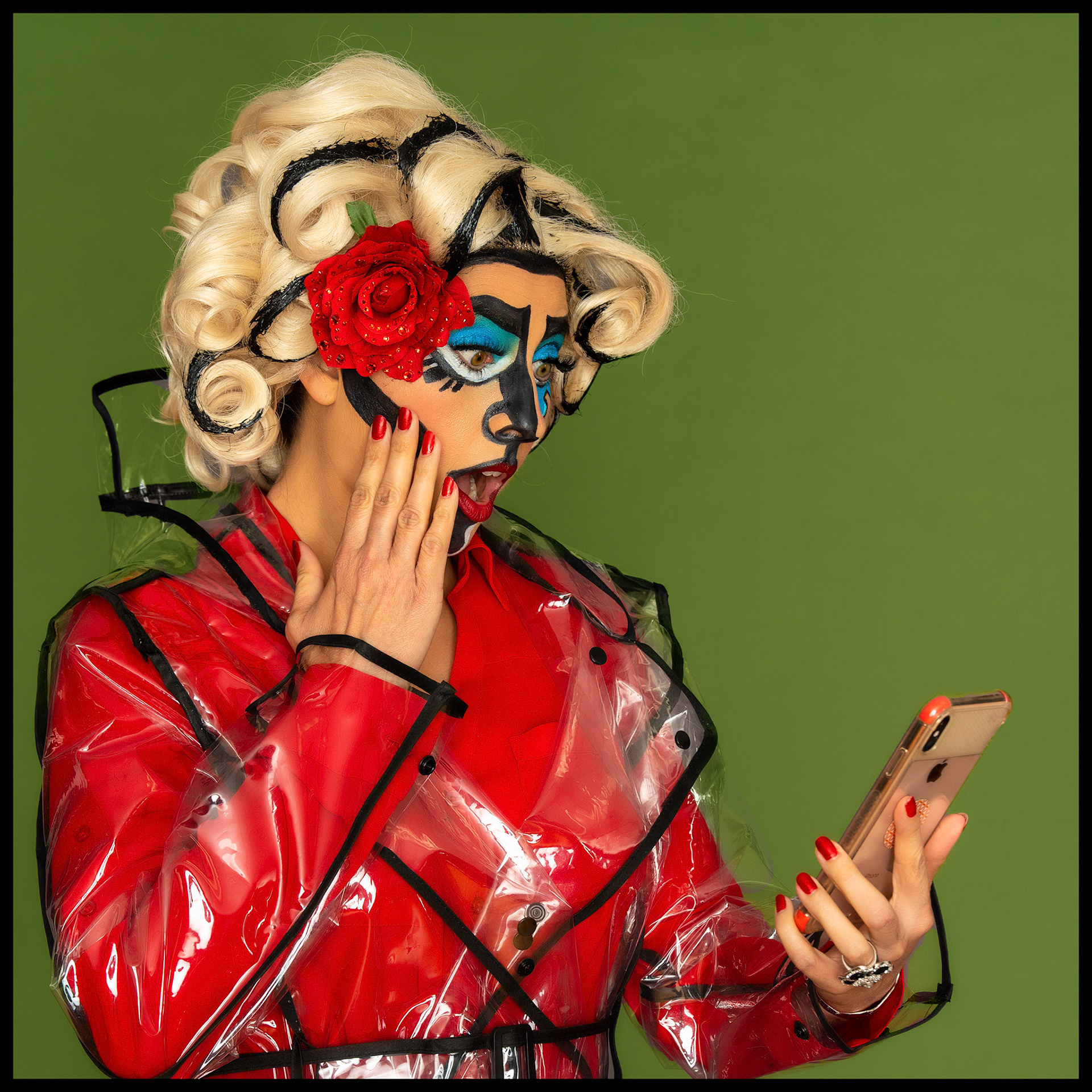
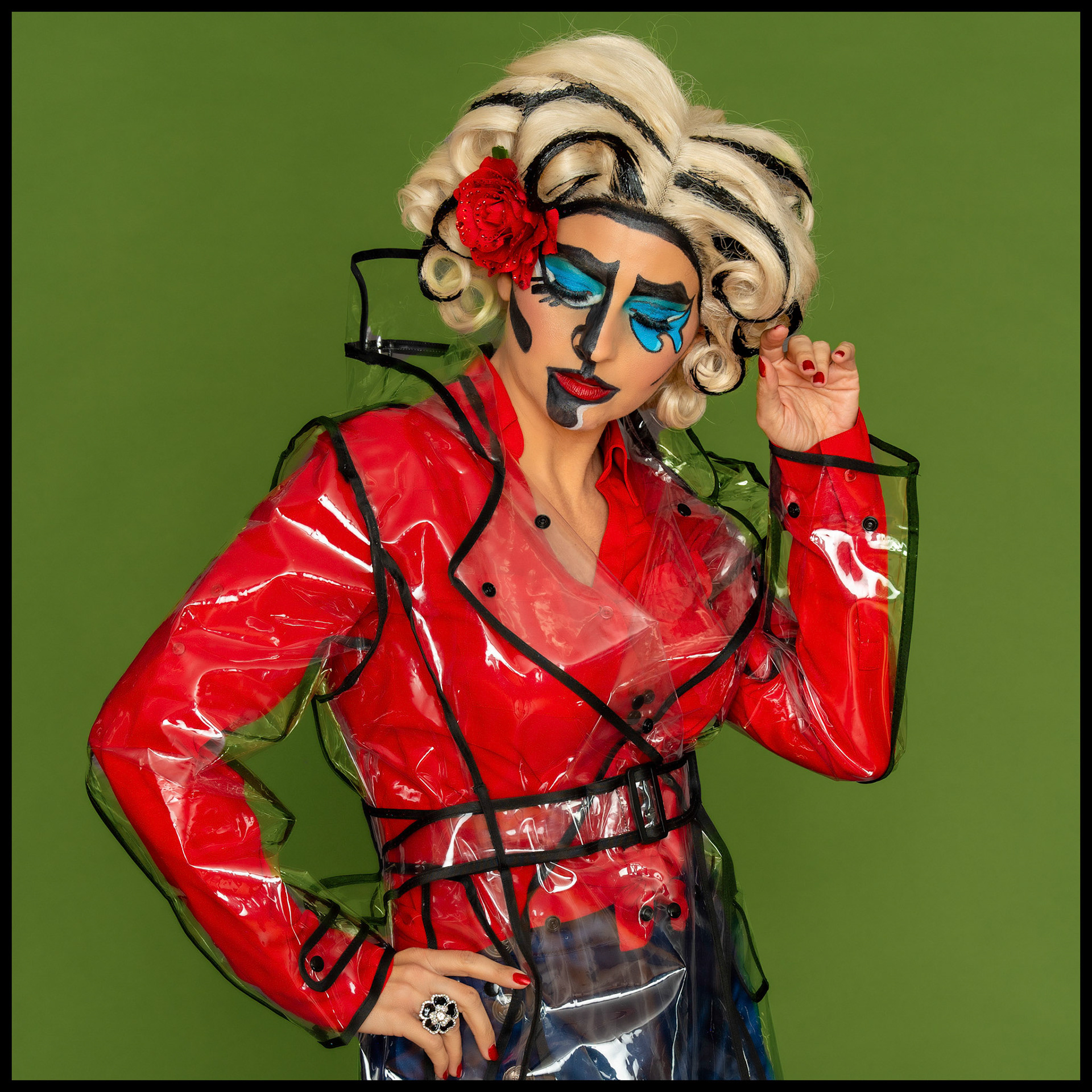
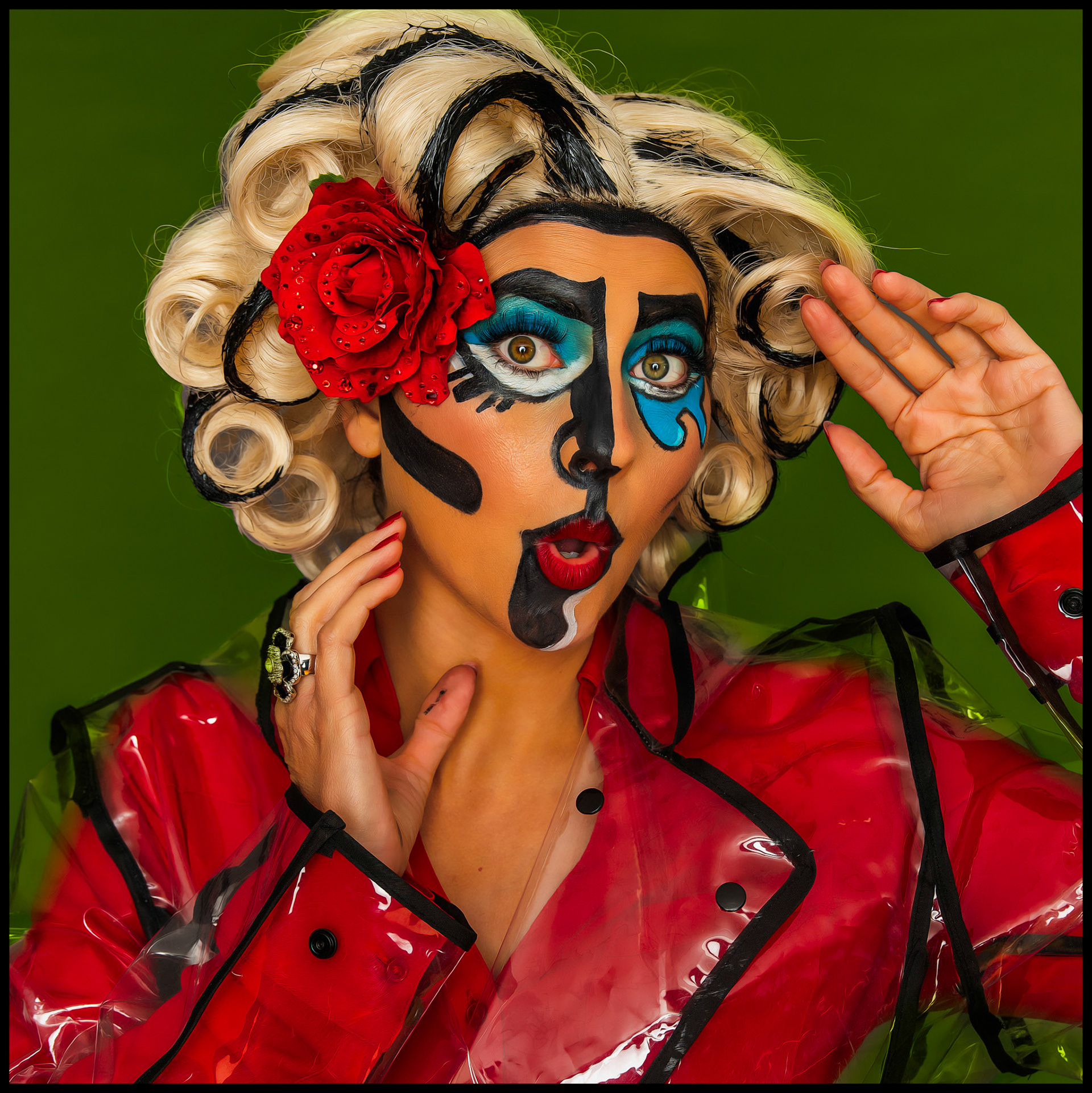


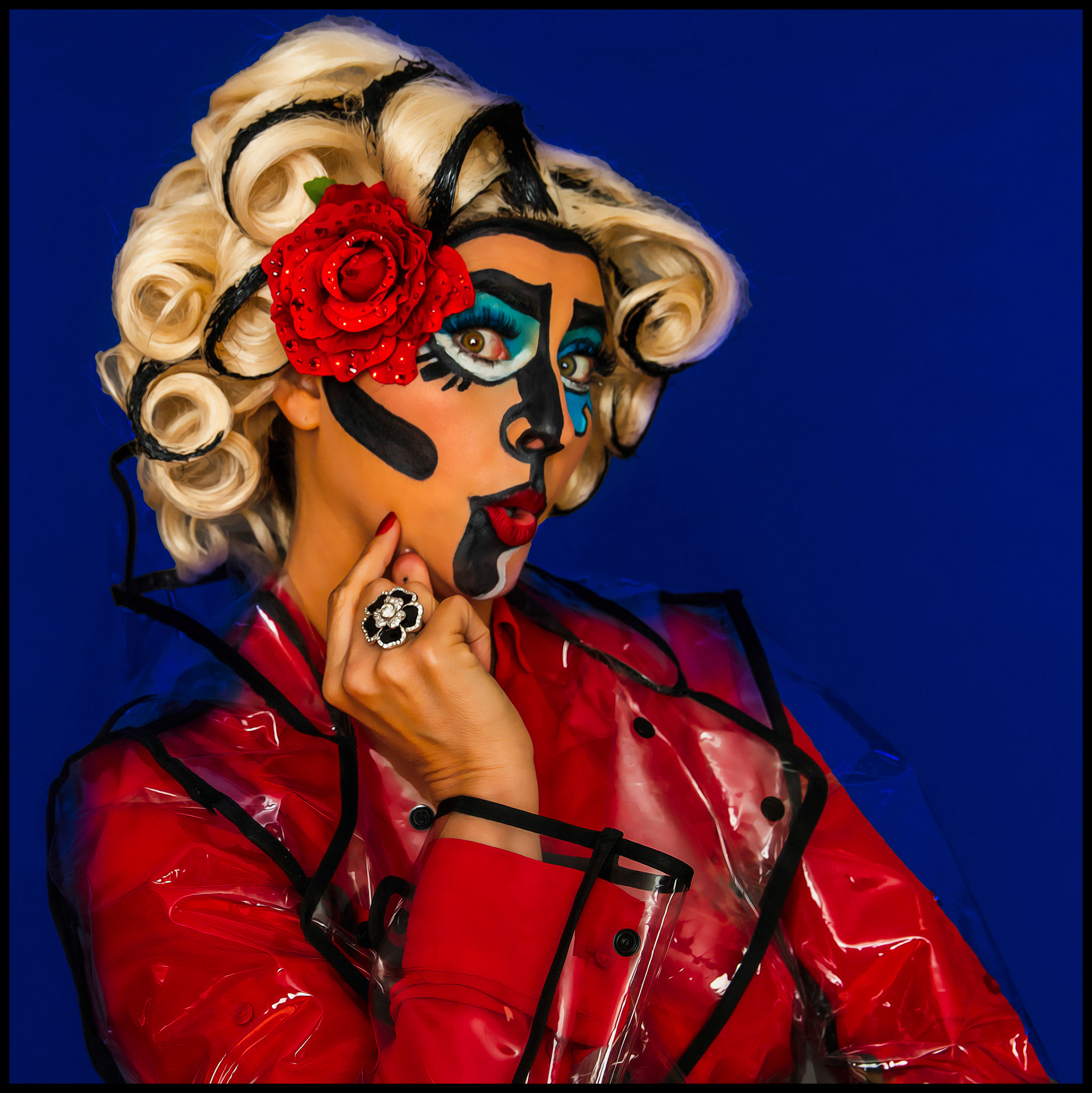
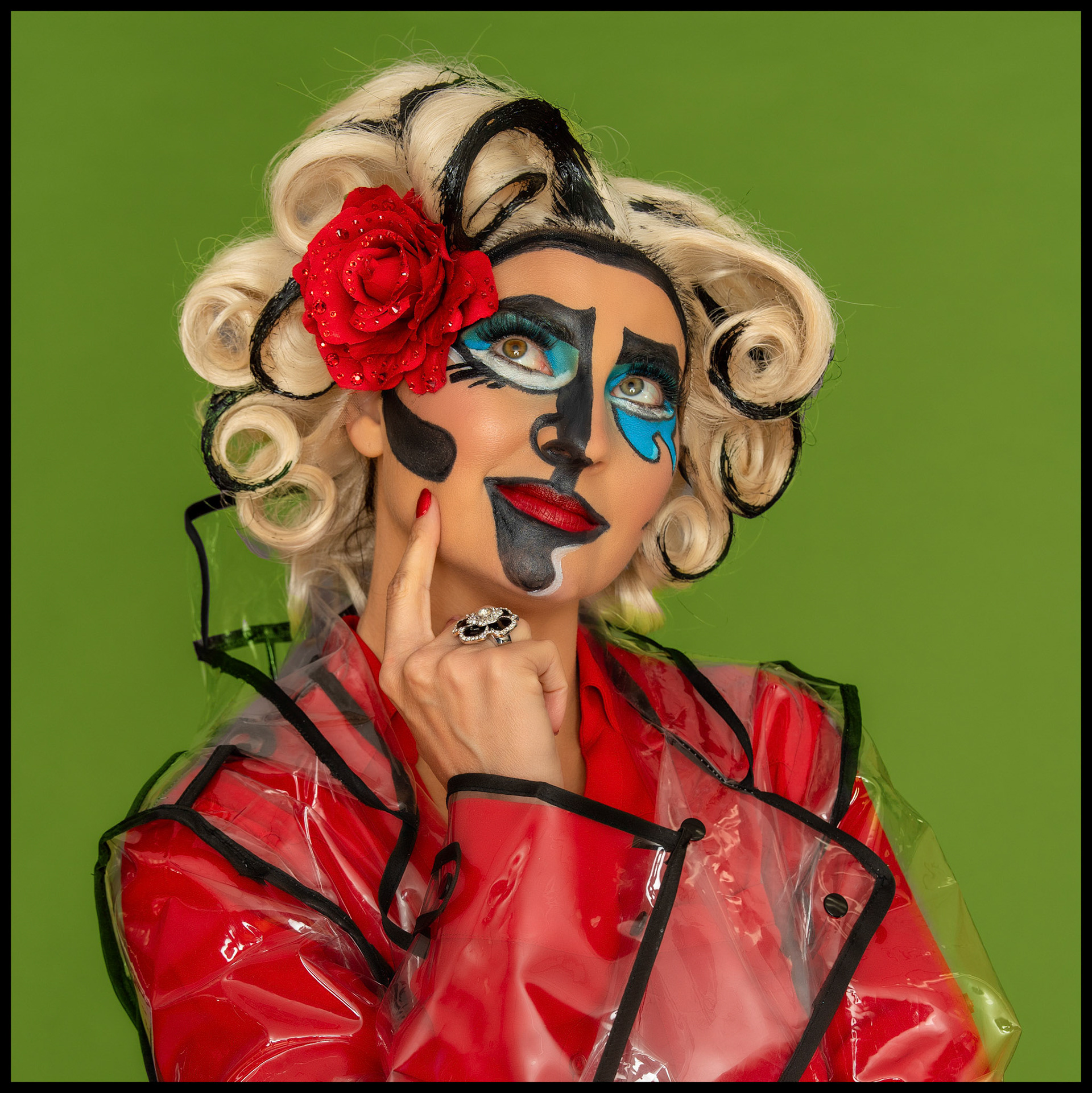
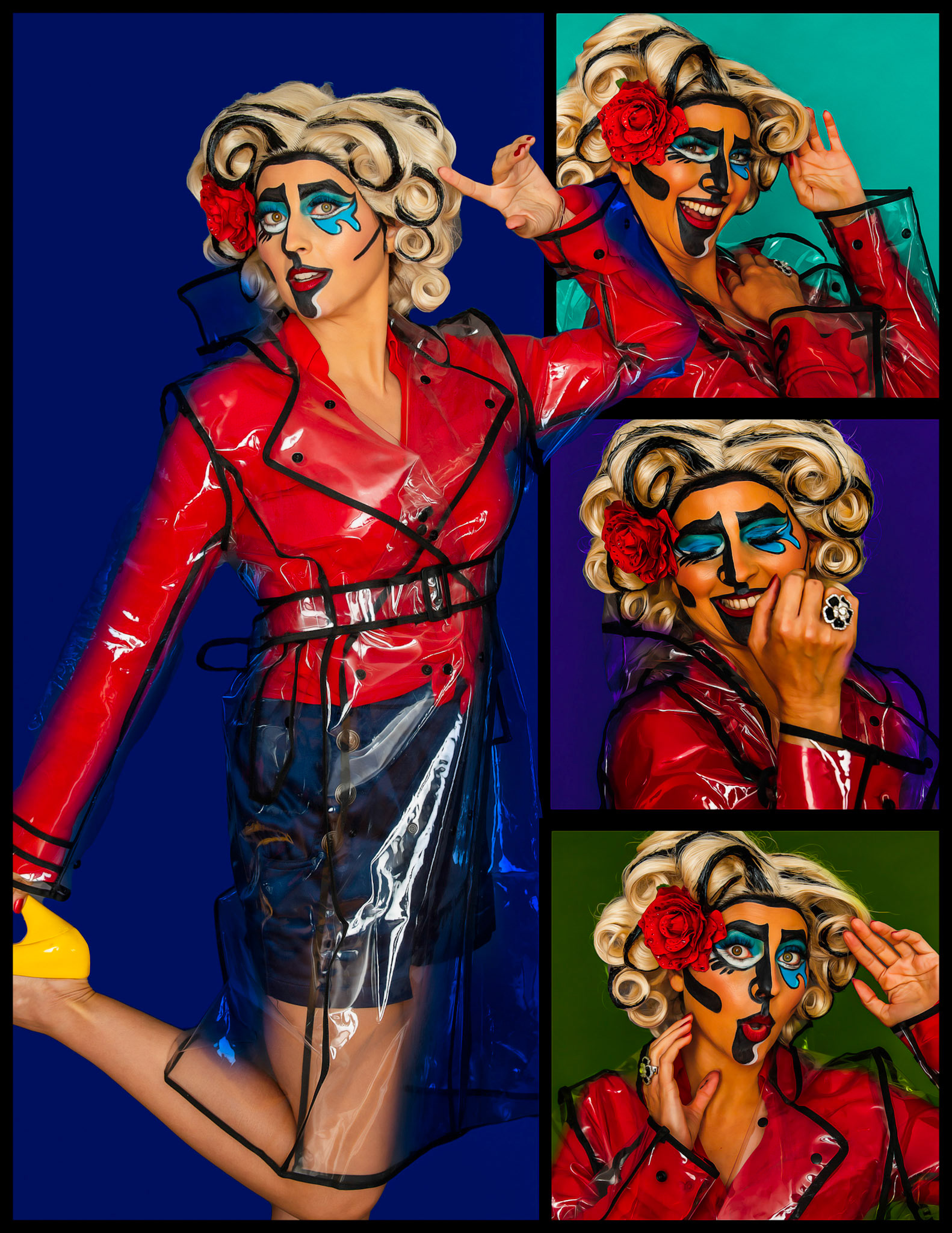
Technicolor Temptress: From Lichtenstein to Live Links is an evocative and vibrant photo series, deriving its inspiration from Roy Lichtenstein, a pioneer of the Pop Art movement. The subject is a young woman rendered with bold makeup reminiscent of a comic book blonde bombshell, a trope famously used by Lichtenstein in his artworks. The bold palette, consisting of blues, reds, greens, and purples, creates a surreal, almost hyperreal atmosphere, transporting the viewer into the pop universe. The protagonist is often depicted in a state of shock, fixated on her cell phone, which visibly displays a QR code.
The Technicolor Temptress series is a unique blend of contemporary digital culture and mid-20th century Pop Art. The saturated palette not only echoes Lichtenstein's style but also the vivid and hyper-stylized aesthetic of comic books and modern digital media. The subject matter of the young woman staring at her phone encapsulates the ubiquity of technology in modern life, while the surprised expression hints at the barrage of unexpected or shocking content that is a common part of the digital experience.
The incorporation of a scannable QR code adds an interactive element to the series. The viewer is drawn into the work, not only as an observer but as a participant. The QR code links to a video of the subject, adding another layer to the narrative and making the viewer complicit in the woman's digital world. This ingenious incorporation of multimedia elements furthers the conversation on the convergence of digital and physical realities.
The series is more than an homage to Lichtenstein; it uses his aesthetic to delve into the commentary on the impact of technology on human interactions. The use of the female figure as a reference to the "bombshell" archetype underscores societal norms around femininity, beauty, and the media's role in their portrayal.
In conclusion, Technicolor Temptress: From Lichtenstein to Live Links is a dynamic, innovative, and thought-provoking photo series. It expands on traditional photographic art by incorporating multimedia elements, thus questioning the boundaries of art, interactivity, and digital culture.
Model: Mary Poll (Mustang Mary "Tango Eyes" (@mustangmarytangoeyes) | Instagram)
HMUA: Danielle Rozycki (Danielle Rozycki (@skin.esteem.with.danielle) | Instagram)
